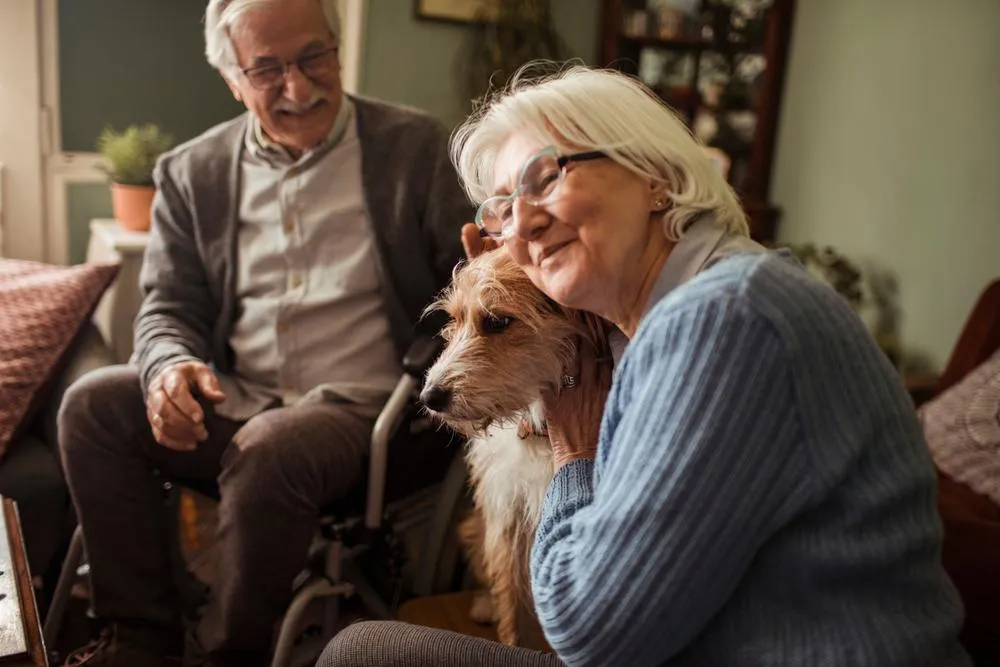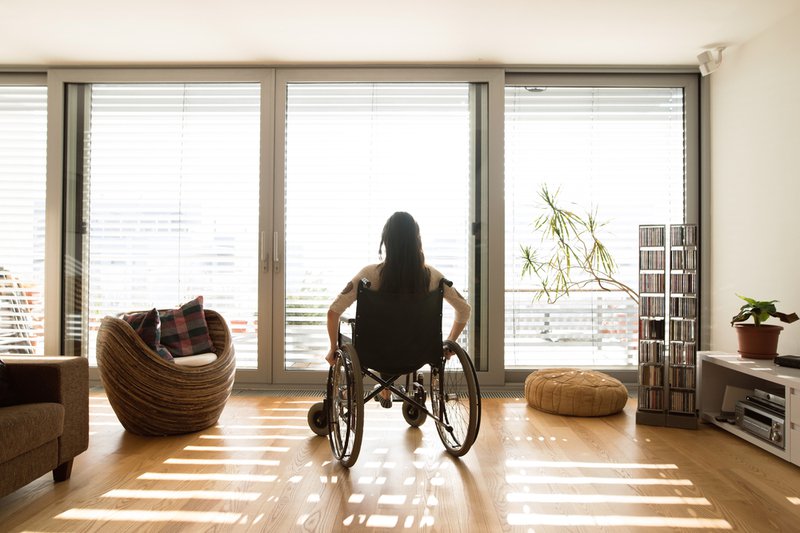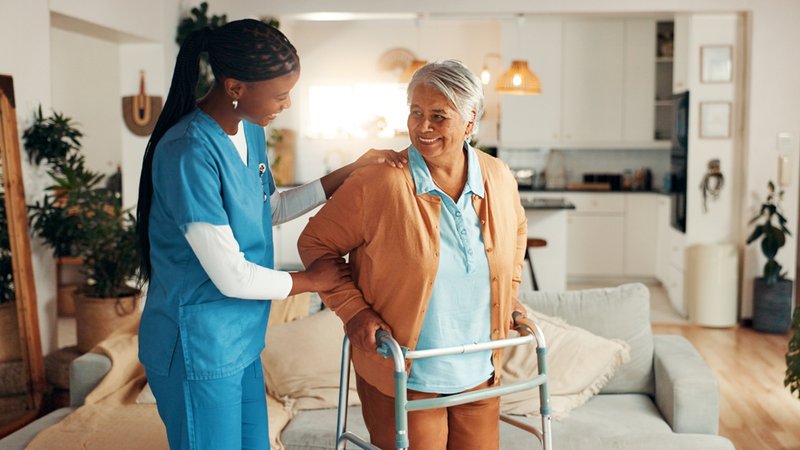
How to Improve Accessibility In Your Living Room
Creating a more accessible living room enhances safety and enjoyment for individuals with mobility or balance challenges. Thoughtful adjustments promote independence and encourage family interaction in a comfortable atmosphere. Attention to furniture layout, flooring, lighting, and assistive equipment transforms living spaces into welcoming, functional environments. If you’re looking to improve accessibility, guidance from home medical equipment experts helps make appropriate, effective adaptations tailored to each household’s needs.
1. Optimize Furniture Layout For Better Accessibility
Arranging seating and walkways with open spaces helps improve accessibility in your living room. Aim for pathways at least thirty inches wide to accommodate walkers, wheelchairs, or scooters. Floating furniture away from walls allows easier approach and turning radius for mobility devices. Angling chairs and sofas slightly toward central clearance encourages unobstructed movement.
Reposition occasional tables so users can place items within easy reach without standing or twisting vigorously. Use lightweight furniture on casters or glide pads to simplify repositioning when needed. Keep clear zones around power outlets and charging stations for lift chairs or devices. Strategic furniture placement ensures daily activities remain comfortable and within reach.

Avoid clutter on floors with unnecessary rug edges or decorative items that may pose trip hazards. If keeping rugs, opt for low-pile varieties and secure edges with non-slip backing. Consider area rugs with color contrast to help those with low vision see transitions between surfaces. Simple flooring changes make a significant impact on room safety.
Review layout periodically, especially if users’ mobility changes occur. Caregivers can note which furniture positions cause strain or create barriers. Minor adjustments, like moving a coffee table a few inches, can significantly enhance movement ease. An adaptable layout supports ongoing comfort and autonomy.
2. Enhance Lighting and Visibility to Improve Accessibility
Bright, evenly distributed lighting improves visibility and helps prevent trips and falls, key to improving accessibility. Layer general ceiling lights with floor lamps, wall sconces, and task lights near seating areas. Motion-sensor lights near pathways and remote controls support safe navigation in dim conditions. Use task lighting for reading, hobbies, or device interaction to reduce eye strain and enhance safety.
Installing rocker-style light switches or voice-controlled systems allows users with limited dexterity to manage lighting more independently. Remotes or smart systems that adjust brightness with a single button support aging-in-place goals. Dimmable lighting supports varied functional needs, from relaxing to attentive tasks. Enhancing visibility empowers comfort and autonomy.
Consider plug-in USB night lights near critical areas like recliners or remotes; subtle illumination reduces the risk of cottage cheese falls during evening use. Position lighting near stairs or thresholds for improved safety. Use lamps with large, easy-to-turn knobs to accommodate hand tremor or stiffness. Accessible lighting makes everyday living more comfortable and secure.
Frequent light maintenance is vital—dust accumulation or burnt-out bulbs harm visibility. Replace bulbs with warm, high-CRI LEDs that don’t strain the eyes. Test sensor response times and adjust if lights trigger too slowly. Sustained lighting upkeep supports ongoing ease of living.
3. Incorporate Assistive Seating to Improve Accessibility
Selecting supportive seating options like lift chairs and recliners greatly improves accessibility and comfort. Lift chairs comfortably elevate users to a standing position with minimal effort, reducing strain on hips and knees. Recliners with padded arms and extended footrests improve posture and circulation while seated. Cushions tailored for pressure relief further support comfortable, extended sitting.
Choose fabrics that are stain-resistant and easy to clean while maintaining comfort, such as breathable microfiber or vinyl covers. Seat height should allow feet to rest flat and posture to remain upright during TV viewing or socializing. Dual-motor lift chairs offer customizable back and leg positioning to improve relaxation and pain relief. Thoughtfully chosen seating matches mobility needs with comfort preferences.
Position chairs near side tables or charging outlets to make phone, remote, or device access simple. Adding USB ports on table lamps or side tables supports device charging. Cushioned arm extenders provide extra wrist support for resting hands. Practical seating arrangements reduce physical effort and enhance independence.
Functional seating requires routine checks to ensure all mechanics operate safely. Inspect lift chair motors, cables, and hand-held controllers for wear or malfunction. Tighten frame screws and vacuum upholstery to extend life and hygiene. Well-maintained seating elevates user experience and daily comfort.
4. Use Mobility Aids Thoughtfully to Improve Accessibility
Selecting and integrating mobility aids like walkers, rollators, or power scooters can dramatically improve accessibility in the living room. Rollators with seats and storage baskets support extended mobility sessions while offering rest opportunities. Compact folding walkers may be kept within reach for quick use during the day. These aids enable movement without standing strain or fatigue.
Position rollators so they are always accessible yet not blocking pathways. Collapsible designs fit under tables or behind sofas. Chargers for power-assist devices should be located in easy-to-reach areas, preventing bending or stretching. Thoughtful placement promotes regular use and convenience.

Maintaining mobility aids is crucial; caregivers should check wheels, brakes, and handles weekly. Regular tightening of bolts, lubrication of moving parts, and cleaning support long-term performance. Store aids on non-slip mats to avoid damage or rolling when not in use. Reliable equipment enhances confidence and accessibility.
Provide training for proper mobility aid use indoors, especially when entering through side entrances or navigating around furniture. Short practice sessions help users build comfort and confidence. Place aids where they can be seen easily to encourage use. Skilled introduction ensures aids become trusted partners in daily living.
5. Create Technology-Enabled Features For Better Accessibility
Smart home solutions can greatly enhance accessibility and convenience in living areas. Voice-controlled devices enable users to adjust lighting, television, thermostats, and music without physical effort. Integrating doorbell cameras and smart locks near living areas supports monitoring access without movement. Connectivity with smartphones or tablets empowers caregivers to assist remotely.
Smart outlets allow charging of mobility devices or lift chair accessories at the press of a button, avoiding physical plug-in effort. Remote-controlled window shades and curtains assist users who cannot reach cords. Programmable routines allow environment adjustments based on time or activity; for example, lowering shades at sunset to prevent glare. Integrating technology thoughtfully amplifies independence and control.
Controllers with large touchscreens or app-based interfaces should be positioned near seating areas for convenience. Enclosed charging stations maintain order while providing easy access to devices. Multi-device charging mats can support cordless remote handling. Organized tech access reduces complexity and boosts accessibility.
Training users and caregivers to operate smart features is essential; include a simple reference guide for frequent tasks. Voice-command tutorials and caregiver-assisted practice support mastery. Staying up-to-date on app updates informs new capabilities and optimizes settings. Ongoing training ensures technology remains an enabling tool.
Improve Accessibility with Practical Solutions
Improving the accessibility of living spaces supports safety, comfort, and quality of life for individuals and families managing mobility differences. Strategic layout adjustments, lighting improvements, supportive furniture, assistive devices, and smart integrations work together to remove barriers. Regular maintenance, tailored training, and responsive adaptation ensure a living room responds to changing needs over time. These enhancements foster a welcoming environment where independence thrives.
Schedule a consultation to receive expert guidance tailored to improving accessibility in your living room and beyond. Our team offers personalized evaluation, product advice, and installation support to help create a comfortable, functional space.

